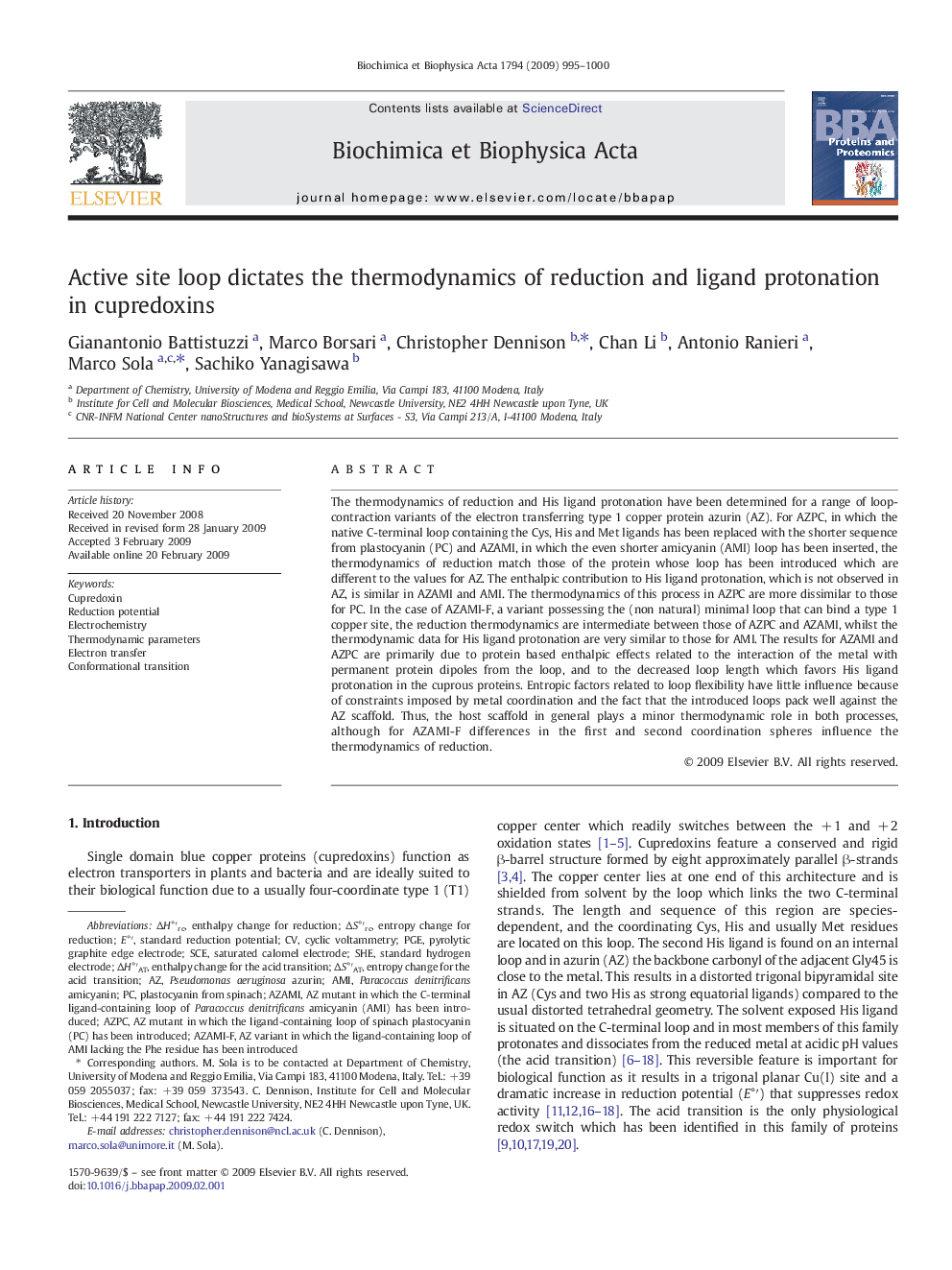| Article ID | Journal | Published Year | Pages | File Type |
|---|---|---|---|---|
| 1180260 | Biochimica et Biophysica Acta (BBA) - Proteins and Proteomics | 2009 | 6 Pages |
The thermodynamics of reduction and His ligand protonation have been determined for a range of loop-contraction variants of the electron transferring type 1 copper protein azurin (AZ). For AZPC, in which the native C-terminal loop containing the Cys, His and Met ligands has been replaced with the shorter sequence from plastocyanin (PC) and AZAMI, in which the even shorter amicyanin (AMI) loop has been inserted, the thermodynamics of reduction match those of the protein whose loop has been introduced which are different to the values for AZ. The enthalpic contribution to His ligand protonation, which is not observed in AZ, is similar in AZAMI and AMI. The thermodynamics of this process in AZPC are more dissimilar to those for PC. In the case of AZAMI-F, a variant possessing the (non natural) minimal loop that can bind a type 1 copper site, the reduction thermodynamics are intermediate between those of AZPC and AZAMI, whilst the thermodynamic data for His ligand protonation are very similar to those for AMI. The results for AZAMI and AZPC are primarily due to protein based enthalpic effects related to the interaction of the metal with permanent protein dipoles from the loop, and to the decreased loop length which favors His ligand protonation in the cuprous proteins. Entropic factors related to loop flexibility have little influence because of constraints imposed by metal coordination and the fact that the introduced loops pack well against the AZ scaffold. Thus, the host scaffold in general plays a minor thermodynamic role in both processes, although for AZAMI-F differences in the first and second coordination spheres influence the thermodynamics of reduction.
